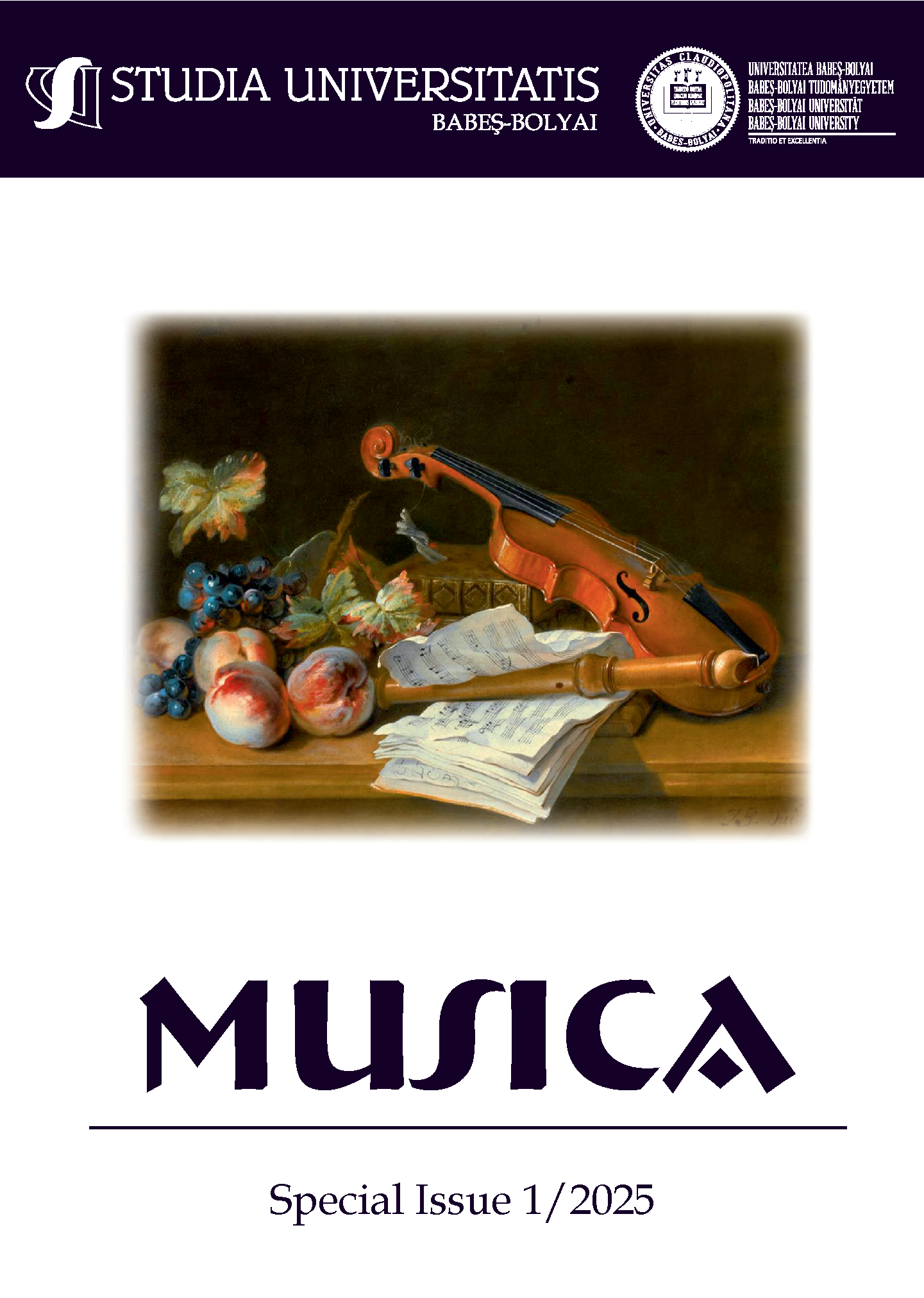STYLISTIC-INTERPRETATIVE ASPECTS IN THE MUSICAL REPERTOIRE SPECIFIC TO BAROQUE VOCAL SINGING
DOI:
https://doi.org/10.24193/subbmusica.2025.spiss1.01Keywords:
Belcanto, arias, baroque, Georg Friedrich Händel, coloratura, drama for musicAbstract
These arias, which played an important role in the history of music, leading to the flowering of the Italian bel canto school and vocal virtuosity, occupied a leading place in all the genres of vocal music that were beginning to develop: opera, cantata, oratorio. The characteristic feature of the vocal arias is that they express new, secular, humanistic content, reflecting faith in human strength, love of life, love of nature, etc. as opposed to religious music. The arias, which are analyzed in this work, represent a stage when the exaggerations of vocal virtuosity had not yet left their mark on musical discourse. We will therefore note that between the lyrics and the expressive melodies, full of naturalness and singing ability, there is perfect unity, perfect interweaving, designed to convey the richness and diversity of the content. The soft imagery, the gentleness and at the same time the exaltation of the love verses - echoing the echoes of troubadour poetry with its tendency to idealize women and the feelings of love - give rise to the melodic ardor and sincerity much adored by Gluck. The pathos of the lyrics of Handel’s Let me mourn my cruel fate, and sigh for freedom also permeate the dramatic accents of the melody. Many of the old arias were destined for the opera house, with the representative composers (Alessandro Scarlatti, Paisiello, Caldara, Carissimi, Handel, Gluck and others) being recognized masters of the genre. Even though most of the works for which they were intended have not been performed for centuries, the wonderful arias still delight listeners all over the world today, and the musical education of young singers is inconceivable without their substantial contribution. The performance of ancient arias requires serious vocal technique, finesse and elegance of expression, restrained interpretation, without excesses of intensity, but with intonational precision, especially in the delivery of specific ornaments. Through their high artistic qualities, they contribute to the formation of good taste in music lovers and to the enrichment of their knowledge of the heritage of pre-classical music.
References
Constantinescu Gabriela, Caraman-Fotea, Daniela, Constantinescu, Grigore, Sava Iosif. Ghid de operă (Opera Guide), Editura Muzicală a Uniunii Compozitorilor, Bucureşti, 1973.
De Cande, Rolland. Histoire universelle de la Musique ((Universal History of Music), Tome 1, Editions du Seuil, 1978.
Eremia, Ramona. Funcţia expresivă a coloraturii vocale (Expressive Function of Vocal Coloring), Cluj-Napoca, Editura Vremi, 2007.
Handel, Georg Friedrich. Lascia ch’io pianga (Let me mourn my cruel fate, and sigh for freedom) in Parisoti, A. Arie antiche (Ancient Arias). Vol. 3, Ed. Ricordi, Milano, 1984.
Hofmann, Alfred. Drumul operei (The Road of Opera), Editura Muzicală, Bucureşti, 1960.
Iliuț, Vasile. O carte a stilurilor musicale (A Book of Musical Styles). Vol. II, București, Editura Muzicală, 2011.
Nicolescu, Mircea. Handel, București, Editura Muzicala a Uniunii Compozitorilor din R.P.R., 1959.
Ştefănescu, Ioana. O istorie a muzicii universale (A History of Universal Music). Vol. 1,2, Bucureşti, Editura Fundaţiei Culturale Române, 1996.
http://en.wikipedia.org/wiki/Coloratura accessed on February 17, 2025.
Downloads
Published
How to Cite
Issue
Section
License
Copyright (c) 2025 Studia Universitatis Babeş-Bolyai Musica

This work is licensed under a Creative Commons Attribution-NonCommercial-NoDerivatives 4.0 International License.



